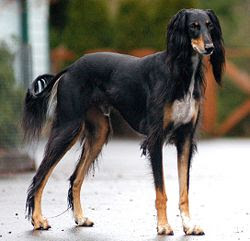
A Highly Prized Sheep Dog
The Australian Kelpie is a working breed that originated in Australia. They were bred to work with sheep having little or no guidance, making them highly prized among farmers and ranchers. Today Australian Kelpies have been imported throughout the world and their charges have expanded to include cattle, goats, ducks, chickens, and other livestock.
Appearance
Australian Kelpies are medium-sized dogs that stand between 17-20 inches and weigh in at 25-45 pounds. They have prick ears and a medium length tail that is low set. Their double coat is weather resistant, short, and dense. Colors of the Australian Kelpie include black or red that may or may not have tan, fawn, chocolate, and blue
History
Temperament
Australian Kelpies are loyal, intelligent, friendly, and truly excel at the tasks they were bred for. These dogs are agile as well, and this mixed with their intelligence allow them to excel in agility and other dog sports. When working they use an “eye”, much like the Border Collie, but will also nip at the heel of more stubborn cattle, just as an Australian Cattle Dog would. Another clever trick they will utilize is if a flock of sheep is packed together in a tight location and they need to get to the other side, these dogs will jump on the back of the nearest sheep and run across the top of the flock. This breed can be kept as companions, but will need to be stimulated. Bored Australian Kelpies may become frustrated and in turn become destructive.
Health and Care
The Australian Kelpie is not suited for apartment life. They need room to roam for them to remain happy and content. If not working they need long walks daily and a busy owner that can keep up with them.
Generally a healthy breed the Australian Kelpie suffers from little genetic problems. They are prone to Progressive Retinal Atrophy, which can lead to blindness. Their life expectancy is around 12 years.
The coat of the Australian Kelpie requires only the occasional brushing. They are average shedders.













